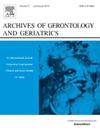印度已婚者的住院医疗保健利用:来自印度纵向老龄化研究(LASI-1)的证据
IF 3.5
3区 医学
Q2 GERIATRICS & GERONTOLOGY
引用次数: 0
摘要
印度一直处于快速社会经济变化的边缘,这些变化表现为全体人民健康和总体生活水平的改善。尽管若干卫生战略和政策解决了印度卫生保健的公平分配问题,但关于这一主题的研究并不多,特别是在已婚者老年人中。本文的目的是评估收入相关的不平等,在医疗保健利用在以前结婚的老年人口在印度。本研究利用了印度纵向老龄化研究第一波的个人水平数据。采用Logistic回归分析,探讨社会经济特征对未婚老年人就医行为的影响。利用瓦格斯塔夫分解分析对医疗保健利用中的社会经济不平等程度进行了量化。回归结果显示,受教育程度越高,住院医疗服务使用率越低。例如,受教育年限超过10年的人的医疗保健使用率比没有受过任何正规教育的人低32% [OR: 0.68;[95% [c.i.: 0.52-0.88]。住院医疗保健利用的几率在那些有发病率的人群中更高[1发病率,OR:1.98;95% ci: 1.68-2.36 &;多病OR: 2.68;95% [c .: 2.25-3.20]。此外,多重发病(83%)和地理区域(50%)是造成医疗保健利用不平等的两个最大因素。目前的研究结果表明,有必要完善社会保障制度,以保护家庭免受困境融资和减少不平等。本文章由计算机程序翻译,如有差异,请以英文原文为准。
Inpatient healthcare utilization among formerly married adults in India: Evidence from the Longitudinal Ageing Study in India (LASI-1)
India has been on the brink of rapid socio-economic changes and these changes have manifested themselves through improvements in health and overall living standards of the general population. Although several health strategies and policies have addressed the equitable distribution of health care in India, not many studies have been undertaken on this topic, especially among formerly married older adults. The aim of this paper is to evaluate income related-inequalities in healthcare utilization among formerly married older population in India. This study utilizes individual level data from the first wave of the Longitudinal Ageing Study in India. Logistic regression was employed to examine the effect of the socio-economic characteristics on the health seeking behavior of the formerly married older adult population. The magnitude of socio-economic inequity in health care utilization was quantified using Wagstaff decomposition analysis. The regression results revealed that with higher levels of education, the odds of getting inpatient health care utilization decreased. For instance, the health care utilization was 32 % less among individuals with 10+ years of schooling than those who did not have any formal level of education [OR: 0.68; 95 % C.I.:0.52–0.88]. The odds of inpatient health care utilization was higher among those who had morbidity [one morbidity, OR:1.98; 95 % C.I.:1.68–2.36 & multimorbidity OR: 2.68; 95 % C.I.:2.25–3.20]. Additionally, presence of multi-morbidity (83 %) and geographical regions (50 %) were two of the largest contributors to inequality in healthcare utilization. Findings from the current study point towards the need for having improved social security systems in place to protect the households from distress financing and reducing inequalities.
求助全文
通过发布文献求助,成功后即可免费获取论文全文。
去求助
来源期刊
CiteScore
7.30
自引率
5.00%
发文量
198
审稿时长
16 days
期刊介绍:
Archives of Gerontology and Geriatrics provides a medium for the publication of papers from the fields of experimental gerontology and clinical and social geriatrics. The principal aim of the journal is to facilitate the exchange of information between specialists in these three fields of gerontological research. Experimental papers dealing with the basic mechanisms of aging at molecular, cellular, tissue or organ levels will be published.
Clinical papers will be accepted if they provide sufficiently new information or are of fundamental importance for the knowledge of human aging. Purely descriptive clinical papers will be accepted only if the results permit further interpretation. Papers dealing with anti-aging pharmacological preparations in humans are welcome. Papers on the social aspects of geriatrics will be accepted if they are of general interest regarding the epidemiology of aging and the efficiency and working methods of the social organizations for the health care of the elderly.

 求助内容:
求助内容: 应助结果提醒方式:
应助结果提醒方式:


